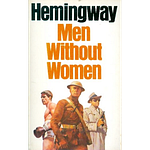Claude McKay was communist, queer, Jamaican, and broke. Also brilliant. Claude McKay wrote the kind of global Black fiction that didn’t fit Hemingway’s Paris—or America’s canon.
TL;DR (This Is a Video Reading & Talk):
This is the recording of my live reading of the first chapter of Banjo by Claude McKay - set in the sunlit, sea-soaked edge of 1920s Marseille. We’ll listen, reflect, and unpack how McKay renders ordinary lives with dignity and complexity.
This isn’t a story about heroes. It’s about inclusion. Normalcy. About Black dockworkers, hustlers, and drifters simply existing—without needing to perform for uplift, or fit someone else’s idea of “literature.”
Down & Out in Marseille
In Banjo, no one has any power. That’s the point.
The dockworkers, street musicians, sailors, hustlers—they’re all scraping by. McKay doesn’t lift any of them above the rest. He doesn't write for uplift. He writes for recognition. For inclusion.
His Marseille isn’t noble or tragic – it’s a diverse, multinational vibrant port, but everyone is broke. Everyone is drifting. That shared instability, economic, beyond national, existential - is the thread.
McKay doesn’t offer a single idealized Black figure. He offers a community of ordinary people. Working-class, messy, joyful, and contradictory. They aren’t exceptional, they’re just complete characters getting by in the world: ordinary, funny, interesting people with real motivations.
Radical in His Restraint
McKay’s politics were radical. His sexuality - quiet, coded, but present - was also radical. But so was his choice of subject.
While others in the Harlem Renaissance focused on “uplift”—polished characters who might prove Black respectability, McKay focused on ordinary people, the ones left out of that narrative.
He wrote of dockworkers in threadbare shirts. Of women like Latnah, not tragic or saved, just trying to live.
“It is more than a gal, more than a pal. It is myself.” — Banjo, Claude McKay
That alone offended some of his peers. W.E.B. Du Bois criticized Home to Harlem for portraying the “lower strata” of Black life. Respectability politics didn’t know what to do with McKay.
McKay knew what he was doing. He was documenting a moment. Capturing the unrecorded texture of a shared, borderless Black experience. One shaped not just by racism, but by labor, migration, music, weather, survival.
He didn’t make Blackness tidy. He made it richer, more complete, more ordinary and yet more worldly.
Yes Sir, That’s My Baby Gene Austin (1925)
Yes Sir, That’s My Baby, popularized by Gene Austin, is the song Banjo starts playing on the bottom of page 7. It’s a ridiculous choice, but it would have been incredibly popular.
I love that the record says “Jazz effects,” whatever that meant.
Its catchy, English-language melody also shows Banjo’s worldly ties and it’s a funny, light song to play dockworkers at the end of the day. It’s light, and it’s popular music: ordinary men living, laughing, playing. Not uplift or tragedy. It’s silly, but it’s radical: Black-rooted jazz asserting life, community, and normalcy.
A Better Curriculum
When I taught middle school in the States, I was given McKay’s poem If We Must Die to use with my students. It’s powerful and beautifully angry, but it’s also maybe too much for a 13-year-old just learning who they are.
Why always start there? Why does the teaching of Black literature so often not go past that?
A lot of the writing I was told to give to my children was always about the tragedy of American Blackness and there is so much more.
Banjo gave me something else to offer. Messy, tender, funny. Just men—Black men, brown men, white men too—eating, laughing, playing music, drifting. Not dying. Not symbols. Just being.
McKay wrote that. He was not alone. But we kept teaching the other stories.
“His queer life was erased. His politics were called outdated. He didn’t get taught.”
Marseille, Again
Reading McKay today hits different. The Marseille he captures is still there in pieces—multilingual, sweaty, proud. You hear the real diversity of the culture of France in the trains, in the bar-tabacs, in the cursing of kids who aren’t from “here” either.
McKay’s vision wasn’t nostalgia. It was recognition. Of people on the edge. Of a world bigger than the nations trying to contain it.
He wrote it in 1929. Sometimes, it feels like we’re still catching up.
But these stories existed then and they exist now.
Read it:
https://archive.org/details/banjostorywitho00mcka/page/2/mode/2up?view=theater.
Comment!
What are important stories that we need to hear today? Or to hear again? Not shocking, not tragic, but more whole, with more voices? Now. Let me know – I am always looking for a good read.
K
Reader Question:
What Did Other Black Writers Think of McKay?
It’s complicated.
Claude McKay was respected, envied, sometimes resented. His poetry, especially pieces like If We Must Die, was widely admired across Harlem Renaissance circles.
But his fiction—Home to Harlem, Banjo, Romance in Marseille—was messier. He wrote about men who drank, hustled, drifted. Who didn’t “aspire,” exactly, but insisted on being seen. Not as symbols. As people.
W.E.B. Du Bois famously condemned Home to Harlem, calling it a “degradation of Negro manhood.”
Jessie Fauset, one of the Renaissance’s gatekeepers, favored polished stories of middle-class ambition and education.
McKay’s banjo-playing dockhands didn’t fit. He wasn’t “uplifting the race.” He was refusing the idea that he had to.
Langston Hughes was more generous. He saw what McKay was doing—writing Black lives that didn’t need saving, only space.
Writers from Fire!!—like Wallace Thurman and Richard Bruce Nugent—felt that too. They knew what it meant to be queer, poor, off-script.
But even they didn’t always find McKay easy. He was aloof. Political. Private. Hard to pin down.
That’s what makes him so essential. He wasn’t just a Black writer in exile. He was a writer of exile. Admired, resisted, hard to classify.
His characters were too ordinary, too global, too unbothered by respectability.
That was a scandal for some readers of the time.
That was his gift.












